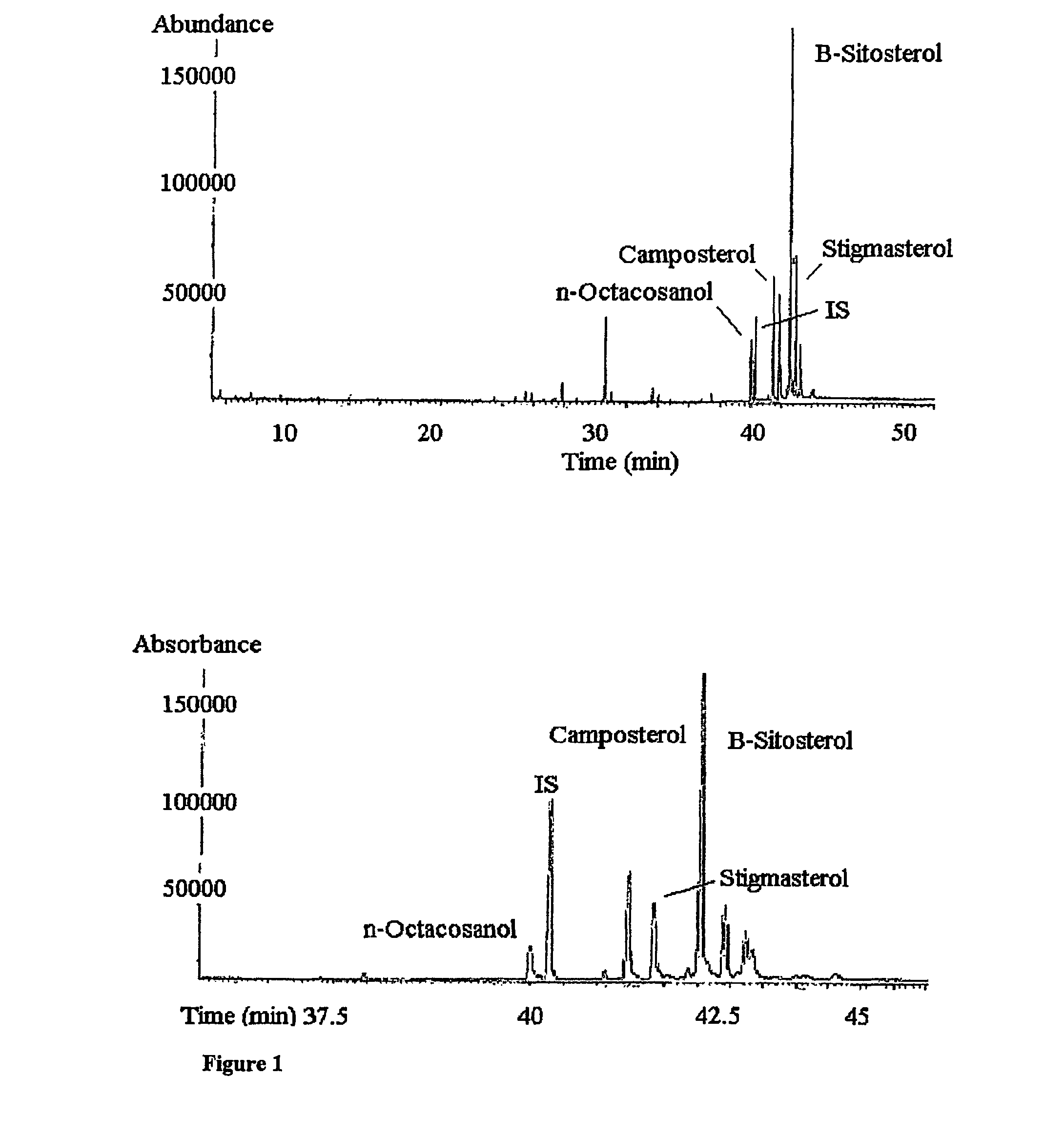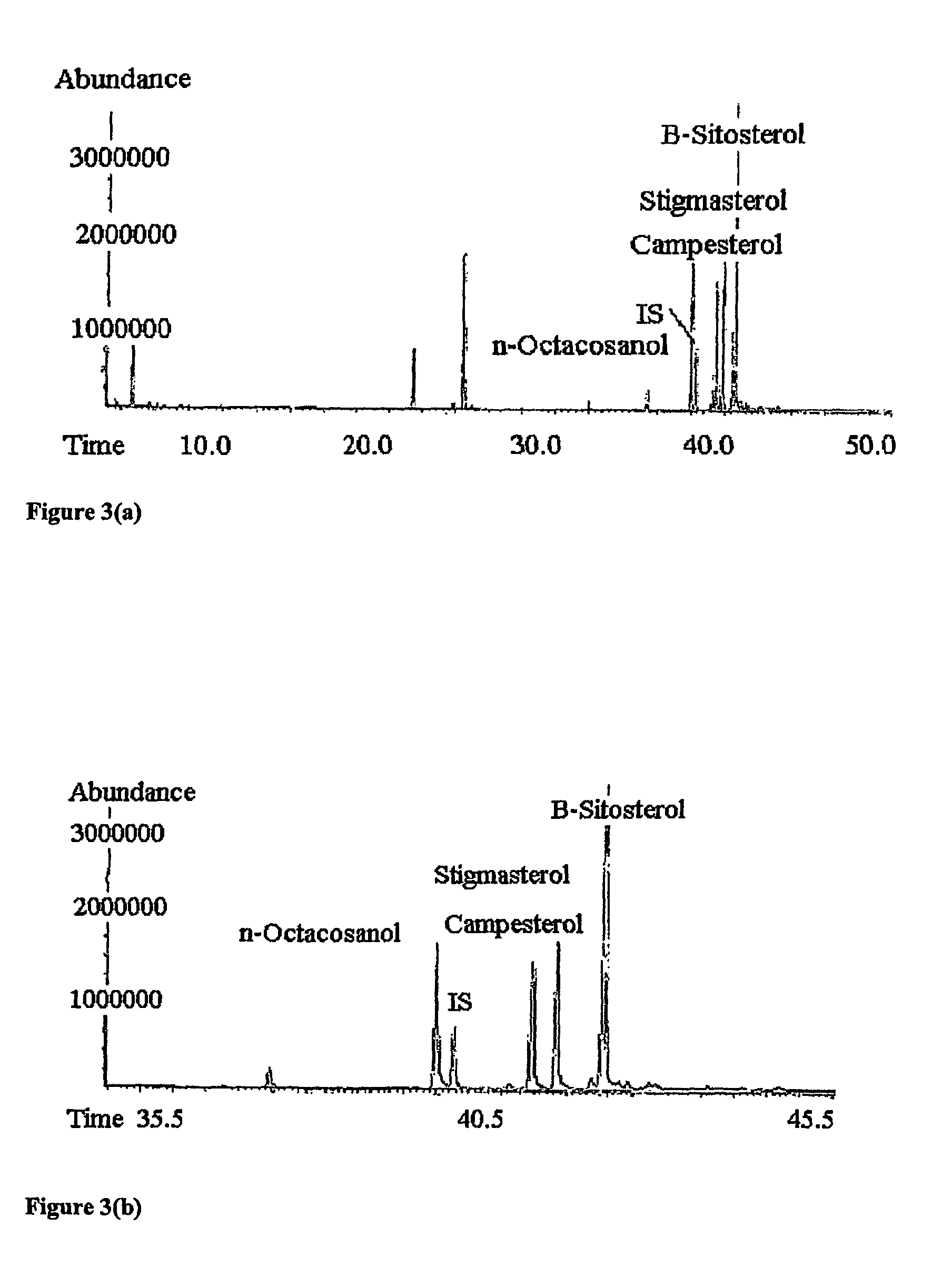Natural sweetener
a natural sweetener and sugar technology, applied in the field of nonnutrient phytochemicals, can solve the problems of increased risk of diabetes, no single substance is sufficient to maintain adequate health, and strong increases in blood sugar levels
- Summary
- Abstract
- Description
- Claims
- Application Information
AI Technical Summary
Benefits of technology
Problems solved by technology
Method used
Image
Examples
example 1
[0167]In this example, adding a molasses extract having GI or burn rate reducing properties according to the invention into a high purity sucrose product produced a natural sweetener. The phytochemical extract was produced using polar and non-polar solvent countercurrent extraction procedures. Other procedures known in the art including specific ion exchange or gel exclusion chromatography can also be used.
[0168]A straight “A” massecuite was boiled to a 90% purity using pure cane syrup. The massecuite footing could be either a washed high purity magma or high grade graining. Once the massecuite reached the appropriate degree of supersaturation it was fugalled to produce a sugar crystal of approximately 99.6% purity. Prior to crystals exiting the dryer, a mix of phytochemicals extracted from the first, second and third molasses extracts was sprayed onto the surface of the crystal. Resulting crystals had a higher content of natural phytochemicals. The crystals can be ground to desired...
example 2
[0169]This example investigated the presence of aliphatic alcohols (policosanols) and phytosterols in fibrated sugar cane tops, bagasse and mill mud.
Extraction and Derivatisation Procedures
[0170]Fibrated cane tops were dried in a vacuum oven at 40° C. for one week. The dried material (9.58 g) was exhaustively extracted with n-heptane (boiling point 98° C.) using a soxhlet extractor for about four hours during which time at least 10 cycles were completed. The extract was dried over anhydrous sodium sulphate and evaporated to dryness to give 115 mg of oily / waxy material (1.2% yield, based on dry weight of cane tops).[0171]Bagasse was treated in the same manner. The dried material (7.60 g) gave 50 mg of oily / waxy material (0.65% yield, based on dry weight of bagasse).[0172]Mill mud was treated in the same manner. The dried material (9.92 g) gave 650 mg of oily / waxy material (6.53% yield, based on dry weight of mill mud).
[0173]All three extracts were saponified after melting at 80-100° ...
example 3
Method for Molasses Fractionation
[0192]The following flowchart illustrates the process used to extract the GI lowering phytochemicals from sugar cane molasses.
[0193]
[0194]The following analysis was completed.
[0195]Electrospray Mass Spectrometry (ES / MS) was conducted on a Micromass Platform ES / MS. The samples were dissolved in Methanol / Water (80:20) and injected into a 20 μl loop and eluted with methanol / water (80:20) at 20 μl / min. MS analysis was conducted in negative ion mode with a cone voltage of 40 kV and a mass range of 50-700 Da. FIGS. 5 to 7 show the resultant traces.
[0196]High Pressure Liquid Chromatography (HPLC) was conducted using a Waters 600 with auto-injector. The column was a Keystone Scientific ODS-Hypersil (150×4.6 mm). The sample was dissolved in 50% acetonitrile / water and 10 μl was injected. The sample was eluted with acetonitrile / 20 mmol acetic acid (15:85) at 1 ml / min. The sample was detected at 210-400 nm with an extracted wavelength of 220 nm. FIGS. 8 and 9 sh...
PUM
| Property | Measurement | Unit |
|---|---|---|
| Glycemic Index | aaaaa | aaaaa |
| glycemic index | aaaaa | aaaaa |
| glycemic index | aaaaa | aaaaa |
Abstract
Description
Claims
Application Information
 Login to View More
Login to View More - R&D
- Intellectual Property
- Life Sciences
- Materials
- Tech Scout
- Unparalleled Data Quality
- Higher Quality Content
- 60% Fewer Hallucinations
Browse by: Latest US Patents, China's latest patents, Technical Efficacy Thesaurus, Application Domain, Technology Topic, Popular Technical Reports.
© 2025 PatSnap. All rights reserved.Legal|Privacy policy|Modern Slavery Act Transparency Statement|Sitemap|About US| Contact US: help@patsnap.com



